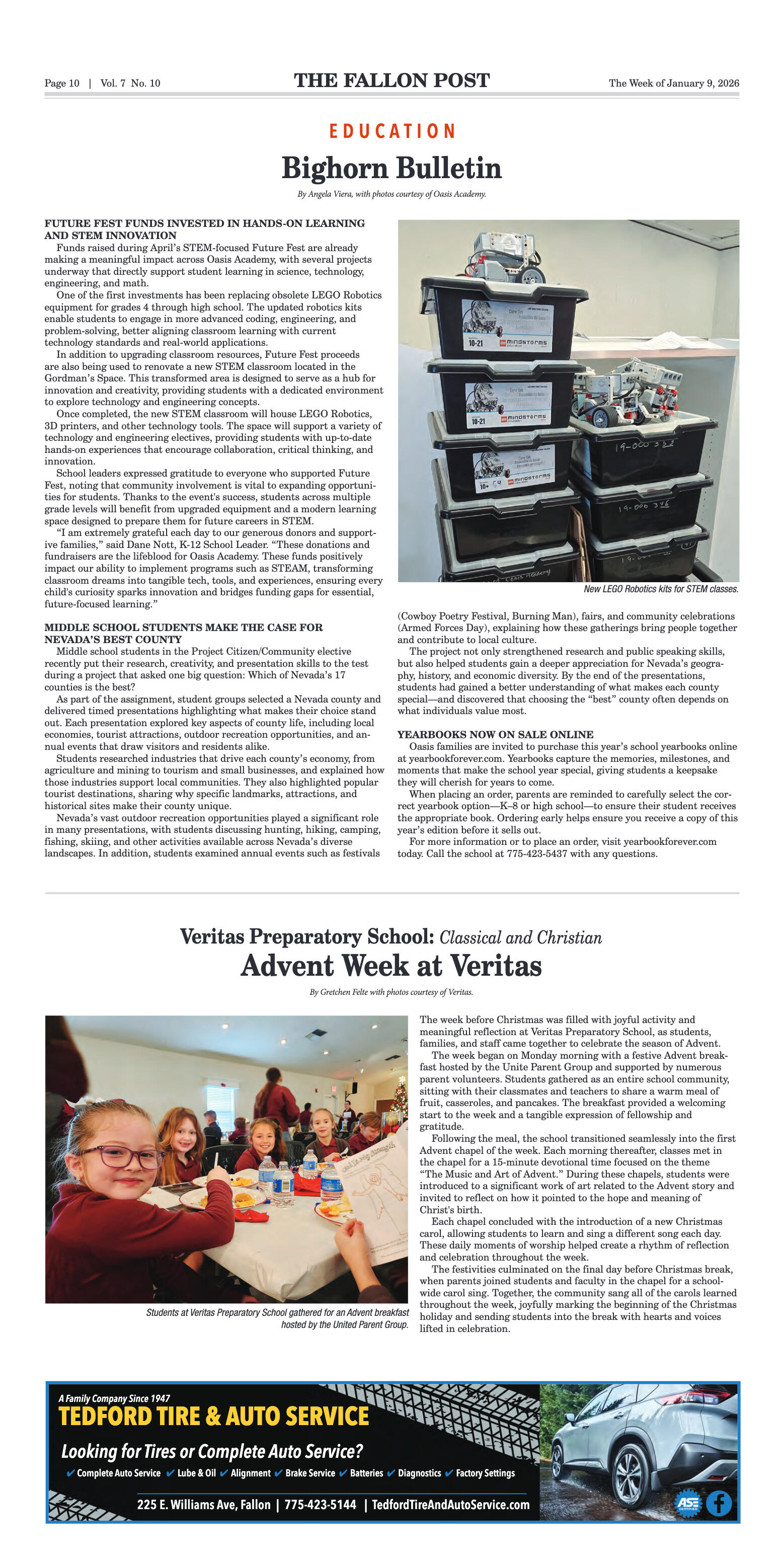Local parents joined educators from Oasis Academy last week in a community meeting to discuss how smartphones and technology affect the brain and how adults can better connect to the children they are raising and teaching.
The conversation was led by school counselor Andy Lenon and a consultant, Molly Dahl, who regularly works with Oasis teachers on professional development. Dahl has authored several books centered around positive psychology and has developed a training program for middle and high school students called YOUTH Positive. She presented the latest research in technology and the teenage brain.
The teenage brain lives on the ideas of “immediate” and “universal” and is, at the basic level, biologically driven. In that state, teenagers naturally work toward differentiating themselves from their parents and becoming independent.
Dahl says teenagers can function while being happy, healthy, and confident despite their driving need to fit in with their peers.
However, she explained that today’s children enter puberty earlier than ever and stay in adolescence longer.
Referencing Laurence Steinberg, one of the world’s leading experts on adolescence, Dahl explained that obesity is the number one factor in the early onset of puberty. Adolescence occurs younger and younger in youth, starting at ten, due primarily to weight gain that affects hormone production. The second leading reason for early onset puberty is endocrine disruption caused by poor nutrition.
“Our kids are eating food that’s not really food,” she said. “Sugar is one of the major contributors, along with processed chemicals that our body can’t recognize as food.” Endocrine-disrupting hormones are interrupting signals to the brain. The National Institute of Health website lists these in food, cosmetics, plastics, and pesticides.
Explaining the link between technology and the acceleration of puberty, Dahl said that light is the third factor causing the disruption. When children are exposed late into the night to the light from cell phones, tablets, and computers, the blue light tricks the brain into thinking that it is still daylight, so the brain does not produce melatonin, which tells the body to shut down and sleep. Children will get sleep disorders and fatigue when the body does not produce melatonin.
When the teenage brain doesn’t have enough sleep, it does not develop and cannot “lay down long-term memory,” she said.
On the other end of early puberty, kids stay in adolescence well into their 20s, with 25-year-olds half as likely to be married, two times as likely to still be in school, and 50% more likely to receive financial support from their parents. “All these outlying factors are impacting kids and keeping them in adolescence longer,” said Dahl.
The brain develops based on the experience it has.
How can we, as parents, friends, teachers, and coaches, help support the teenagers in our lives?
Emotion versus reason. The cell phone deepens the connection to the emotional brain. With likes and thumbs up, heavy visual content, gaming, and violent gaming, social media feeds the neural networks at the emotional level.
The reasoning brain is learned and trained. Through maturation, which children all reach at different levels, the brain can be trained to reason instead of reacting. “As we become responsive toward developing perspective, there is a hierarchy of first, self-awareness followed by self-reflection, and then an understanding of responsibility and ownership,” said Dahl. “They don’t continue to cast blame on others or victimize themselves.”
Based on the current research, the three main things that screen time is doing to children is the longer duration of screen-based media use leads to less efficient cognitive control, which Dahl says is “being in charge of yourself, managing impulses and emotions.” Second is the delay in the development of the prefrontal cortex to the medial cortex, meaning the structure of the brain, and third is a lowering of the ability to pay attention, especially when learning new tasks. “How do I put that into what I already know, and how do I make sense of it,” she said.
“Basically, the ability to synthesize new and useful information is reduced, self-control, abnormalities, and impairments in impulse regulation, all those things that we’re working really hard to support in the developing teenage brain, this little device, the more that it’s used, just counteracts everything,” said Dahl.
In presenting solutions, Dahl said it is essential for kids to get outside every day and be in nature. Kids need to access oxygen and water. This will help balance hormones, which are messengers to the brain. As adults, we should also set boundaries and discipline for screen time.








































Comment
Comments